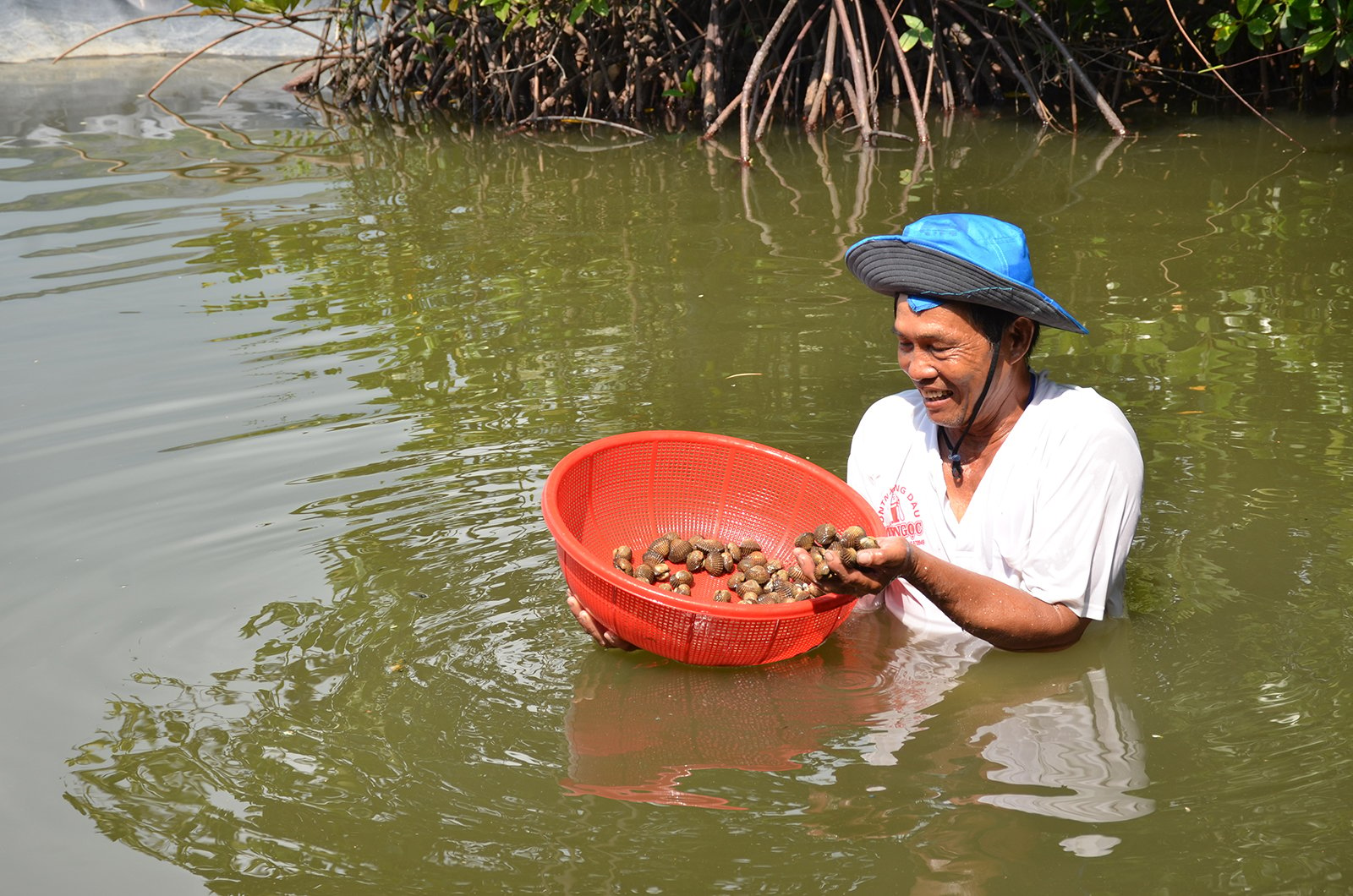
People in Kien Luong commune raise blood cockles under the canopy of coastal protection forests. Photo: THUY TRANG
In recent years, due to the impact of climate change, rising sea levels, and extreme weather, coastal erosion has become increasingly serious. Many areas of coastal protection forests have been lost, affecting the environment and people's lives. To protect and restore coastal protection forests, the province has focused on implementing projects to rehabilitate, restore, and plant new forests.
From various sources of funding and technical solutions, including support from international organizations, the province has organized the planting and restoration of protective forests in some seriously eroded sea dyke sections. Over the years, the area and quality of forests in these areas have gradually improved, increasing the ability to block waves, wind and effectively protect sea dykes from the impacts of climate change. The restored coastal protective forest areas have created an ideal environment for marine species to reproduce, regenerate resources, and at the same time create livelihoods for coastal residents.
Implementing the sustainable forestry development program, the Provincial People's Committee has advocated the policy of allocating protective forest land to local people. This is one of the key solutions to help restore forest areas, while creating jobs and increasing income for people. On the allocated forest land area, people must retain 70% of the forest area, the remaining area is allowed to exploit 30% of the water surface area for aquaculture, such as shrimp, fish, crabs, and blood cockles. Through economic models under the forest canopy, people have a more stable source of income, gradually rising out of poverty.
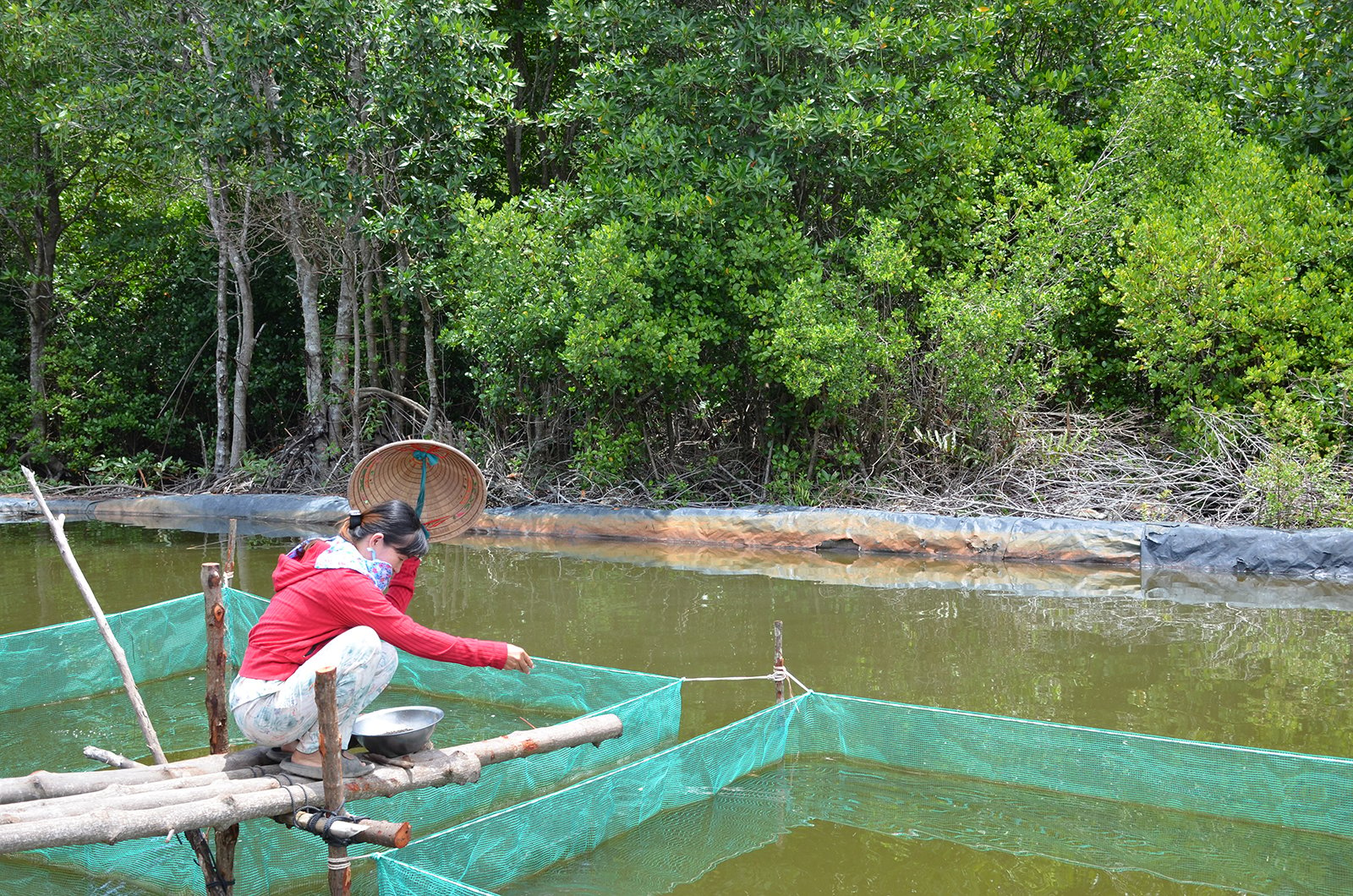
Farmers in Ba Nui hamlet, Kien Luong commune raise grouper fish under the protective forest canopy. Photo: THUY TRANG
Mr. Dang Thanh Phong, residing in Ba Nui hamlet, Kien Luong commune, was assigned 4 hectares of protective forest land. On the water surface area that is allowed to be exploited, Mr. Phong raises grouper, bringing high economic efficiency, earning from 150 - 200 million VND/year. In addition to raising grouper, he also takes advantage of the alluvial land to raise bivalve mollusks, such as blood cockles, oysters, and green mussels, helping his family earn more income.
Mr. Phong shared: “Living in coastal areas, people are aware of the importance of protective forests. When the forest belt is too thin, there are storms, strong waves, and water overflows the dike, fish and shrimp are also swept out to sea. Therefore, in addition to production and exploitation, we always remind each other to actively plant new trees and protect the existing forest area.”
According to the Head of the Provincial Forest Protection Department, Tran Thanh Duoc, in general, policies on planting, protecting forests and using coastal protection forest land basically ensure the rights of contracted people, helping to improve livelihoods and increase income, especially for poor households and ethnic minority households in coastal areas.
To raise people's awareness of forest protection, the Provincial Forest Protection Department directed the forest protection units to step up propaganda and mobilize people to protect forests, prevent and fight forest fires, and provide guidance on forest planting techniques. Forest rangers regularly patrol and control to promptly detect, prevent and strictly handle violations in accordance with legal regulations. At the same time, the department coordinates with sectors and localities to invest in implementing programs and projects to support people in accessing new scientific and technical advances in production and aquaculture; combining the development of eco-tourism under the forest canopy, encouraging people to participate in cooperatives to link production, creating stable output...
THUY TRANG
Source: https://baoangiang.com.vn/phat-trien-kinh-te-gan-voi-bao-ve-rung-a464211.html



![[Photo] Nhan Dan Newspaper launches “Fatherland in the Heart: The Concert Film”](https://vphoto.vietnam.vn/thumb/1200x675/vietnam/resource/IMAGE/2025/10/16/1760622132545_thiet-ke-chua-co-ten-36-png.webp)



![[Photo] General Secretary To Lam attends the 18th Hanoi Party Congress, term 2025-2030](https://vphoto.vietnam.vn/thumb/1200x675/vietnam/resource/IMAGE/2025/10/16/1760581023342_cover-0367-jpg.webp)
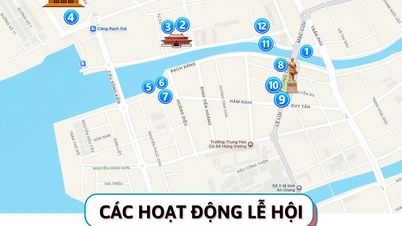

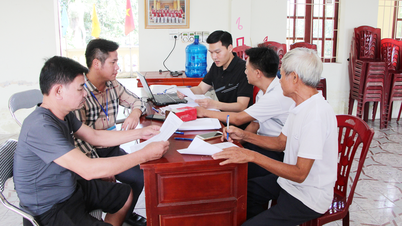


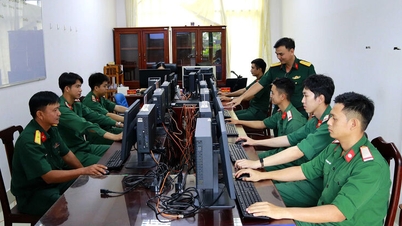


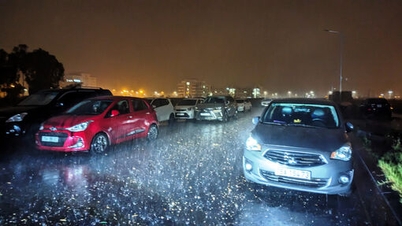

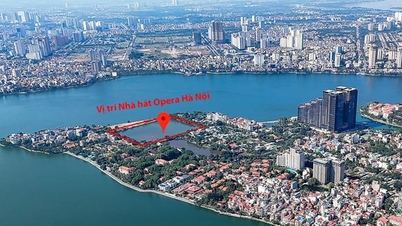

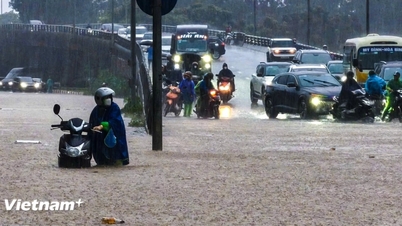










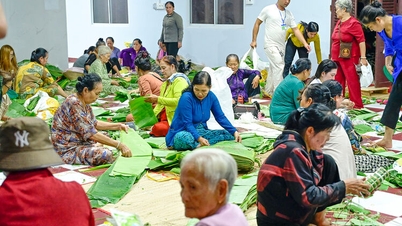
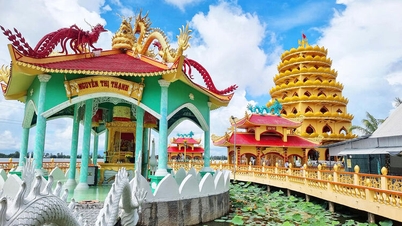
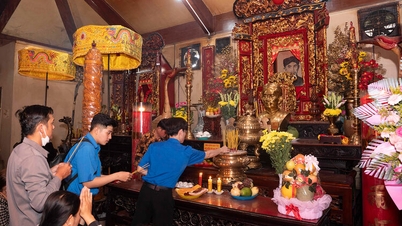


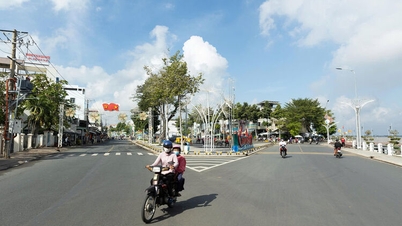
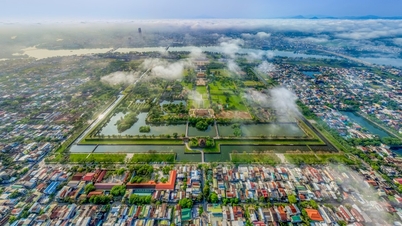


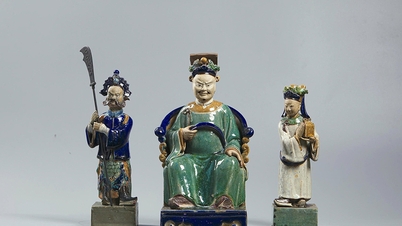



![[Video] TripAdvisor honors many famous attractions of Ninh Binh](https://vphoto.vietnam.vn/thumb/402x226/vietnam/resource/IMAGE/2025/10/16/1760574721908_vinh-danh-ninh-binh-7368-jpg.webp)



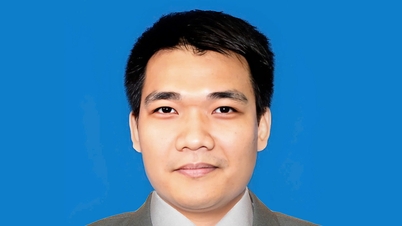

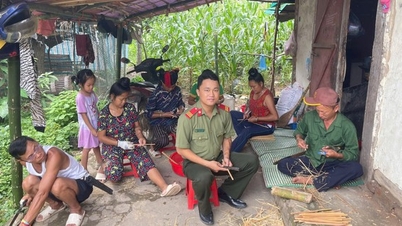

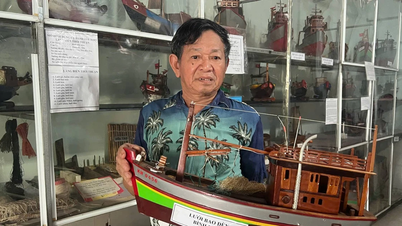




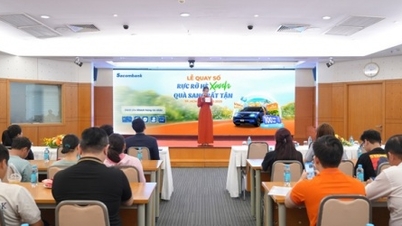


















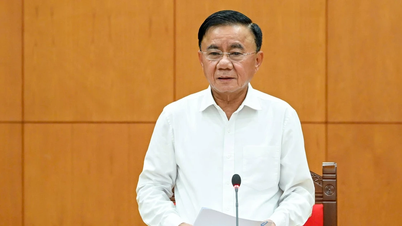




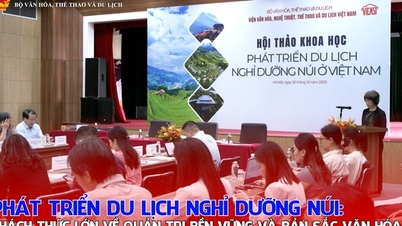



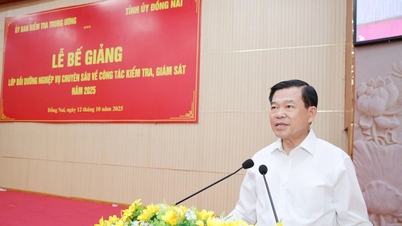

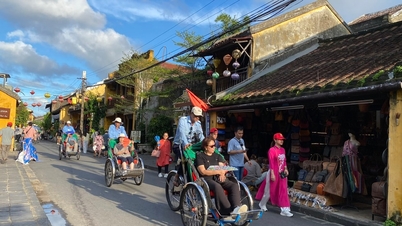

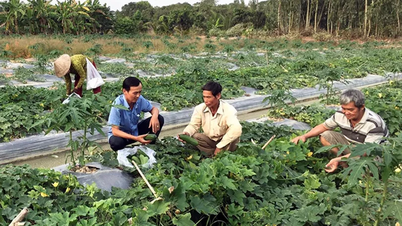

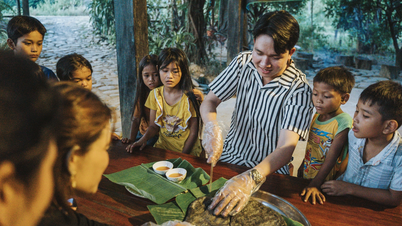

















Comment (0)